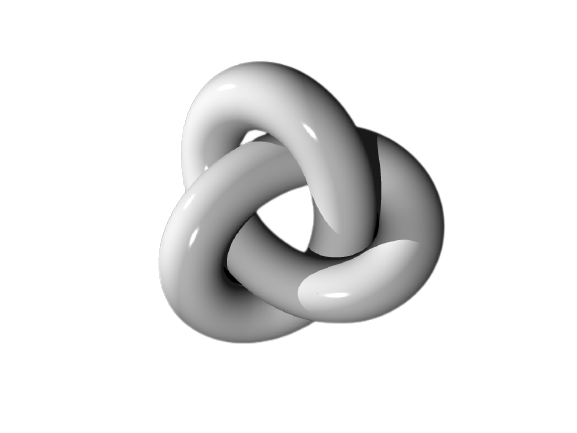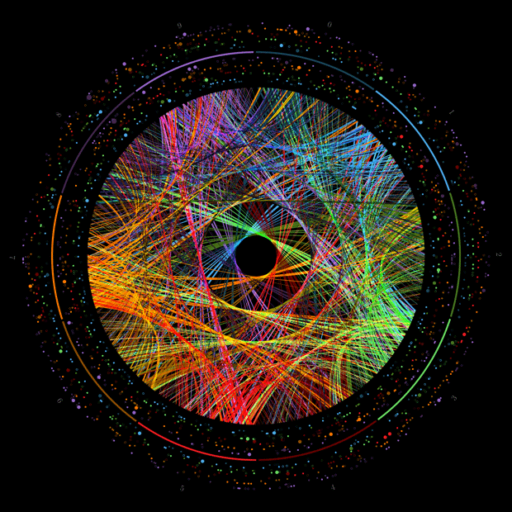The Topology Series


Chapter 1
Prerequisites- Set Theory
What is topology?
In simple terms, Topology is concerned with the geometric properties of objects when it undergoes physical distortions like stretching, twisting, and bending.
Now we dive a bit deeper in terms of mathematics.
Definition 1– A topology on a set X is a collection T of subsets of X having the following properties-
- Φ and X are in T.
- The union of the elements of any subcollection of T is in T.
- The intersection of the elements of any finite subcollection of T is in T.
Definition 2– A set X for which a topology T has been specified is called a topological space.
A topological space is an ordered pair (X, T) consisting of a set X and a topology T on X.
If X is a topological space with topology T, we say that a subset U of X is an open set of X if U belongs to collection of T.
A topological space is a set X are both open, and such that arbitrary unions and finite intersections of open sets are open.
If X is any set, the collection of all subsets of X, it is called the discrete Topology. The collection consisting of X, we shall call it the indiscrete Topology, or the trivial Topology.
Example– Let X be a set, let Tf be the collection of all subsets U of X such that X-U either is finite or is all of X. Then Tf is a topology on X, called the finite complement topology. Both X and Φ are in Tf, since X-X is finite and X-Φ is all of X. If {Uα} is an indexed family of non- empty elements of Tf, to show that ∪Uα, is in Tf, we compute,
X – ∪Uα = ∩(X – Uα).
The set is finite because each set X – Uα is finite. U1, U2,……….,Un are non-empty elements of Tf, to show that ∩U1 is in Tf, we compute,
X – ∩Ui = ∪(X – Ui) (i = 1, to n).
Point set topology is a disease from which the human race will soon recover.
Henri Poincare
Definition 3– Suppose that T and T’ are two topologies on a given set X. If T⊂T’, we say that T’ is finer than T. We also say T is coarser than T’, or strictly coarser, in these two respective situations. Wes say that T is comparable with T’ if either T⊂T’ or T‘⊂T.
Definition 4– If X is a set, a basis for a topology on X is a collection B of subsets X (called basis elements) such that-
- For each x ∈ X, there is at least one basis element B containing x.
- If x belongs to the intersection of two basis elements B1 and B2, then there is a basis element B3 containing x such that B3 ⊂ B1∩B2.
If B satisfies these two conditions, then we define the topology T generated by B as follows-
A subset U of X is said to be open in X (that is, to be an element of T) if for each x ∈ U, there is a basis element B ∈ B such that x ∈ B and B ⊂ U.
Note that each basis element is itself an element of T.
To understand better we will go through a few lemmas.
Lemma 1– Let X be a set; let B be a basis for topology T on X. Then T equals the collection of all unions of elements of B.
Proof- Given a collection of elements of B, they are also elements of T. Because T is a topology, their union is in T. Conversely, given U ∈ T, choose for each x ∈ U an element Bx of B such that x ∈ Bx ⊂ U. Then U = ∪x ∈ U Bx, so U equals a union of elements of B.
Lemma 2– Let X be a topological space. Suppose that C is a collection of open sets of X such that for each open set U of X and each x in U, there is an element C of C such that x ∈ C ⊂ U. Then C is a basis for the topology of X.
(Proof will be available on demand.)
Lemma 3– Let B and B‘ be bases for the topologies T and T’, respectively, on X. Then the following are equivalent:
- T’ is finer than T.
- For each x ∈ X and each basis for the topologies and each basis element B ∈ B containing x, there is a basis element B’ ∈ B‘ such that x ∈ B’ ⊂ B.
(Proof will be available on demand.)
TO BE CONTINUED IN CHAPTER 2.



